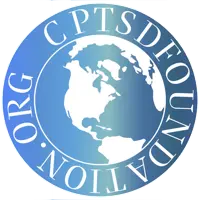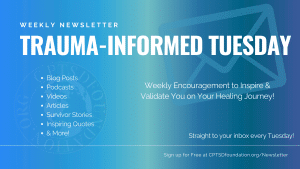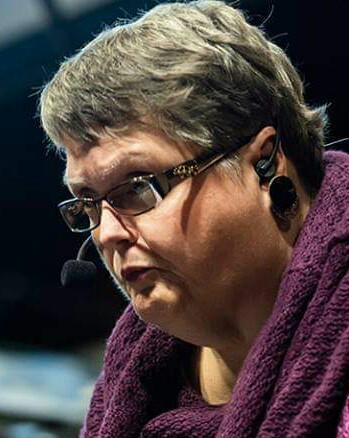***Trigger Warning: this article will address childhood sexual abuse and may not be suitable for all audiences.***
As our readers know by now, CPTSD Foundation is not afraid to tackle tough subjects that have for too long been considered taboo. This month’s articles will be about childhood sexual abuse and the recovery process to achieve a healthy and happy adult life.
This article will concentrate on what childhood sexual abuse is and how it relates to complex post-traumatic stress disorder (CPTSD).
Childhood Sexual Abuse, the Hidden Epidemic

It is simply human nature that no one wants to admit that children can and are sexually abused. After all, to admit that children are mistreated in such heinous ways makes us feel heartsick.
However, child sexual abuse does occur, and it leaves scars that will last a lifetime.
The only way to defeat childhood sexual abuse is to bring it out into the open, where it can be clearly seen (David et al., 2016).
What is Childhood Sexual Abuse?
The definition may seem a no-brainer to those in the know, but even those who have experienced sexual childhood trauma may have a narrow idea of what it is, and this can be a problem. Not understanding what childhood sexual abuse is can harm people because they do not understand that what they experienced was indeed abuse and not normal.
There are three types of sexual abuse of a child, contact, non-contact, and online.
Contact sexual abuse happens when an abuser makes physical contact with a child, including:
- Touching the child in a sexual manner anywhere on the child’s body, whether the child is dressed or not
- Using a part of the or an object to penetrate a child
- Making a child undress
- Making a child touch another person, including other children
- Forcing a child to do sexual activities
- Touching, kissing, or oral sex with a child (sexual abuse does not need to be penetrative.)
Non-contact abuse means a child is abused without being physically touched by an abuser. This includes in-person and online. Non-contact sexual abuse includes:
- Exposing of genitalia to a child
- Exposing breasts to a child
- Showing a child pornography
- Making a child watch sexual acts
- Making a child masturbate
- Forcing a child to make or view sexual images or videos
- The distribution of images or videos of a child pornography
- Forcing a child to carry out sexual conversations or activities online
Remember, a child is an innocent victim in all the above circumstances as they have no control over what an adult will do. They cannot get away or tell an adult no, so they are completely exonerated from any blame.
Who Sexually Abuses Children?

When child sexual abuse is mentioned, many people have an image in their minds of a deviant man dressed in ragged clothes with no job or living in the backwoods.
This description is wrong.
Child sexual abusers look like everyone else, often hold high-esteem jobs, and can be women. Sexual abusers cross all demographic lines, including income, race, sex, and where they live.
30-40% of child sexual abuse victims are abused by a close family member rather than a stranger, with 50% of victims being harmed by someone outside the family that the family knows and trusts, such as a pastor or a boy scout leader.
About 40% of child sexual abuse victims are abused by older or larger children that they know, with 50% of these children being under the age of 12.
The list of those who can and do sexually abuse children is long, with siblings, mothers, fathers, grandparents, teachers, and social leaders having been caught in the past doing just that.
The Chilling Statistics of Childhood Sexual Abuse
The statistics of the number of children who are sexually abused before the age of 18 are staggering.
1 in 4 girls and 1 in 6 boys are sexually abused
1 in 5 children are solicited for sex on the internet
Nearly 70% of all assault (this includes adults) happens to kids age 17 and under.
More than 20% of victims of childhood sexual abuse are the age of 8 or under.
Many victims of childhood sexual abuse will never disclose their abuse to anyone else, choosing instead to keep the secret their abuser told them they had to keep.
Signs A Child Has Been or Is Currently Being Sexually Abused

As adults, we must be diligent in watching over our children and those of our neighbors. If we recognize the following signs in a child, it is time to immediately get help. Even if you are wrong, it is better to err on the side of caution.
Some physical signs of childhood sexual abuse include:
- A child having a sexually transmitted infection
- Signs of damage to the child’s genital area such as unexplained bleeding, bruising,
or blood on sheets, clothing, or underwear.
Behavioral signs might include:
- Knowledge of talk of sexual topics beyond the child’s years
- Not talking as much as usual
- Acting like they are keeping a secret
- Having developed a fear of being left alone with certain people
- Being afraid to be away from the child’s parents or caregivers (if it is a new behavior)
- Sudden onset of thumb-sucking or bedwetting
- Sexual behavior towards themselves of another child
- Spending a lot of their time alone
- Withdrawal from family and friends
- Trying to avoid bathing or removing their clothes
Emotional signs of sexual abuse of a child are as follows:
- Increased aggression or change in mood and personality
- Decrease in confidence
- Decrease in self-image
- A change in eating habits
- Excessive fear or worry
- Stomach aches and headaches that cannot be unexplained
- Decrease in interest in activities, friends, and schoolwork
- Nightmares
- Self-harming behaviors
(RAINN)
If you recognize any of these signs in a child, please, do not hesitate to act.
If you recognize these signs from your childhood, chances are you were sexually abused as a child.
Ongoing Childhood Sexual Abuse and Complex Post-Traumatic Stress Disorder

Complex post-traumatic stress disorder (CPTSD) forms in response to chronic traumatization over months or years. Sexual abuse of a child that is repeated and where the victim feels they cannot escape is often the trigger for CPTSD.
Those children who go through childhood sexual abuse when the brain is still developing and are just beginning to form who they are as a person can cause the child’s entire neurological and psychological development to be arrested.
Along with the sexual abuse, child victims may also suffer from neglect where they experience mixed affections from the perpetrator, thus forming a disorganized attachment disorder from the mixed messages they receive.
Adults who were sexually abused as children often grow up with symptoms that frequently interrupt day-to-day life. Emotional dysregulation is the primary culprit as survivors of childhood abuse who formed CPTSD have a horrible time with emotions, both experiencing and controlling them.
Many other victims of childhood sexual abuse and CPSD have persistent sadness, anger, and suicidal thoughts. It is common for survivors to re-experience their emotions from childhood in emotional flashbacks, where they feel the emotions they felt as children but do not experience the sights, smells, or sounds.
CPTSD and childhood sexual abuse are intimately linked, but both can be treated, and someone living with them can excel in life.
There is Always Hope
Whether you are reading this piece because you have been abused or know someone who was, it is important to remember that life goes on after sexual abuse.
You are NOT damaged goods, and your history does not define your present or your future.
Never, ever give up on yourself or someone you know who experienced childhood sexual abuse. There are hope and life afterward; I am a living example that this is true.
I was sexually abused when I was a child, from shortly after birth to 15, by a relative whom I loved very much. The things he did and the lack of parental recognition of what was going on locked me into a prison where I hid and pent up all my relative’s activities and how I felt about it.
I have formed complex post-traumatic stress disorder and a few other mental health disorders that have hampered my life in the past.
Today, after treatment, I am beyond surviving; I am thriving. I enjoy my life and, while acknowledging my past, do not live there any longer. I am moving forward because I sought treatment as an adult.
I tell you my story so you can understand that you too can live a happy and contented life after childhood sexual abuse and despite CPTSD.
“THE GOOD LIFE requires that we take pleasure in new things; A GOOD LIFE requires that we take pleasure in moments.
To enjoy THE GOOD LIFE, we have to get ahead; to enjoy A GOOD LIFE, we have to make the trip worthwhile.
THE GOOD LIFE is not supported by feeding our pocketbooks; A GOOD LIFE is supported by feeding our souls.” ~ Steve Goodier
References
David, O. Ezecki, A. Wapmuk, (2016). Child Sexual Abuse: The Hidden Epidemic. Nigerian Journal of Clinical & Biomedical Research. Vol. 7 No. 7: 6 – 15
Warning signs for young children. RAINN. Retrieved from: https://www.rainn.org/articles/warning-signs-young-children

If you are a survivor or someone who loves a survivor and cannot find a therapist who treats complex post-traumatic stress disorder, please contact the CPTSD Foundation. We have a staff of volunteers who have been compiling a list of providers who treat CPTSD. They would be happy to give you more ideas about where to look for and find a therapist to help you. Go to the contact us page and send us a note stating you need help, and our staff will respond quickly to your request.
Are you a therapist who treats CPTSD? Please, consider dropping us a line to add you to our growing list of providers. You would get aid in finding clients, and you would be helping someone find the peace they deserve. Go to the contact us page and send us a note, and our staff will respond quickly.
Shortly, CPTSD Foundation will have compiled a long list of providers who treat complex post-traumatic stress disorder. When it becomes available, we will be putting it on our website www.CPTSDFoundation.org.
Make sure to visit us and sign up for our weekly newsletter to help keep you informed on treatment options and much more for complex post-traumatic stress disorder.
If you or a loved one live in the despair and isolation that comes with complex post-traumatic stress disorder, please, come to us for help. CPTSD Foundation offers a wide range of services, including:
- Daily Calls
- The Healing Book Club
- Support Groups
- Our Blog
- The Trauma-Informed Newsletter
- Daily Encouragement Texts

All our services are reasonably priced, and some are even free. So, to gain more insight into how complex post-traumatic stress disorder is altering your life and how you can overcome it, sign-up; we will be glad to help you. If you cannot afford to pay, go to www.cptsdfoundation.org/scholarship to apply for aid. We only wish to serve you.

My name is Shirley Davis and I am a freelance writer with over 40-years- experience writing short stories and poetry. Living as I do among the corn and bean fields of Illinois (USA), working from home using the Internet has become the best way to communicate with the world. My interests are wide and varied. I love any kind of science and read several research papers per week to satisfy my curiosity. I have earned an Associate Degree in Psychology and enjoy writing books on the subjects that most interest me.




Fantastic and comprehensive article…blessings in your continued journey and as you support other CSA victims.
Dr. Kelli Palfy
Author of: Men Too: Unspoken Truths About Male Sexual Abuse
Thank you, Doctor. I appreciate your positive comment very much. Shirley
Thank You Shirley,
This was very well written and super helpful, informative. I feel like this is a comprehensive introduction that could be a precursor into the the subject for practitioners and folks healing from there own trauma.
Thank you, very much! Shirley
Two of Advancing Parenting’s fifty-two parenting norms bumper stickers address child abuse.
Bumper sticker # 21 reads, Protecting children from physical, sexual, verbal, and psychological abuse supports their healthy development.
And bumper sticker #51 reads, Support young ones healthy development by teaching them about their bodies, their right to say no, and how abusers use friendship, secrets, and threats to hurt children.
Bumper stickers are a unique and powerful way for friends, family, and neighbors to share parenting wisdom with everyone. Visit http://www.advancingparenting.org. In our own special way we are working proactively to prevent child abuse.
You don’t seem to have enough thoughtful comments for this wonderfully written article. This is an excellent primer for someone trying to understand the definition and impact of CSA. As a survivor who has done decades of work to parse and process my abuse, I wish this were in the hands of every person who works with children. No one asked me any questions and I had no one I could tell at the time who would’ve known what to do with the information. I am very glad to have found this in my Twitter feed this morning.
Podcaster on my journey to recovery: Skyborne
Thank you I’m glad I could help. Shirley
I am 64. Abused in Boy Scouts age 12. Had pushed all the anxiety and fear to the back till recently. Filed with a list of over 96,000 abused scouts., looking for change in that org. the resurfacing of the details necessary for the testimony, have brought me to a difficult place. having trouble.. wife understands., she tries hard..
triggers cause unexpected emotions., etc. sometimes, I just need someone to talk with. I have very limited funds. My abuse is not public knowledge to my circle at church nor my family.,
Thanks,
Dave.
Hi, I’m sorry you had that experience. I am 64 and my abuse started at 13 by a teacher, it continued for 16 months. Understanding that I have CPTSD has been a game changer. I have benefited greatly from doing what’s called the Daily Practice. You can learn about it without change at the Crappy Childhood Fairy website. Good luck????❤️